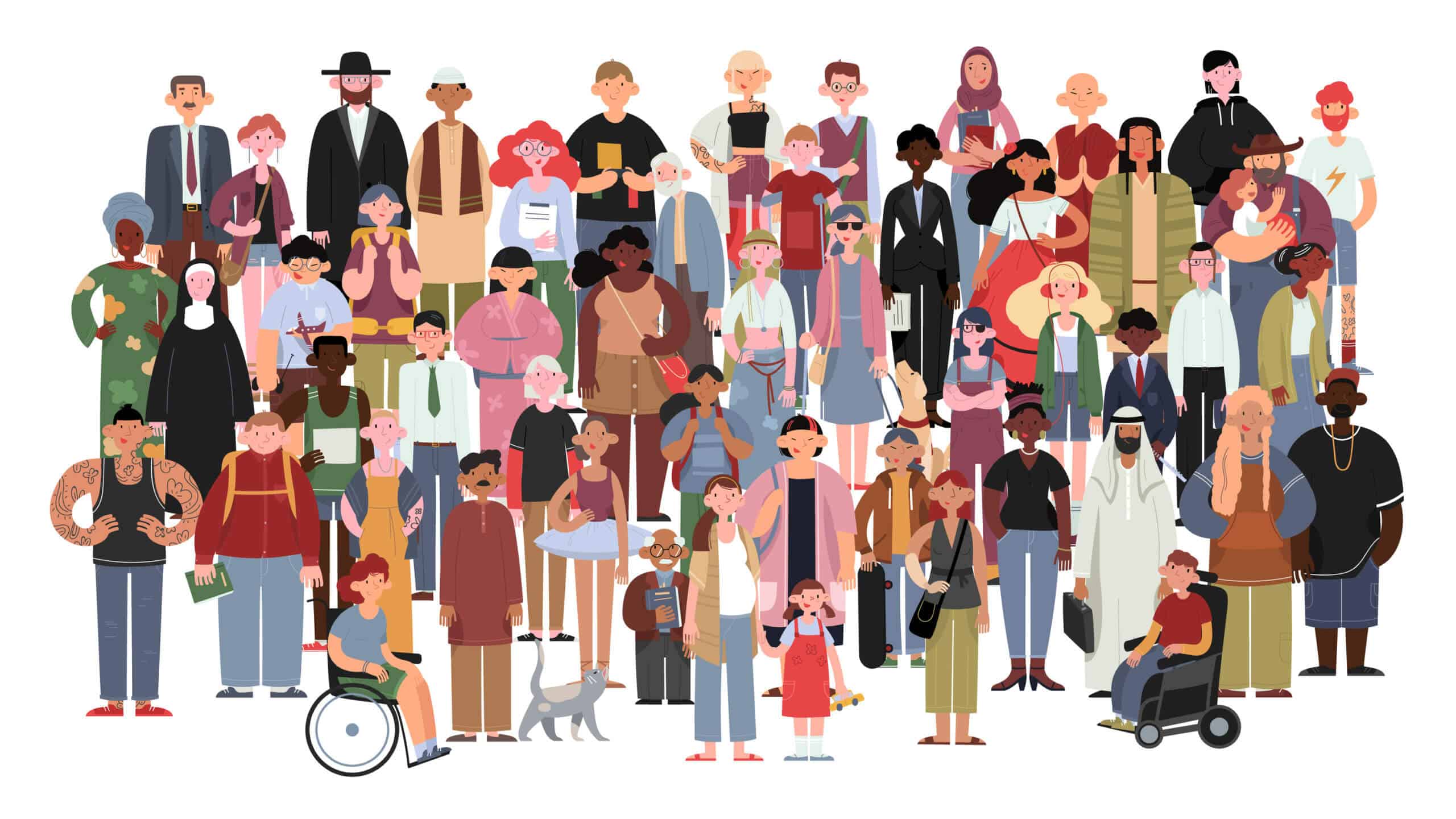No one person can be looked at through one prism. This is where intersectionality comes in. Here, we explore why the term is so important.
Quite often, when we think of people we think of them in a rather shallow and neutral way.
We know a woman, or a man, or we categorize people as women and men, without taking into account the differences that these women may have between one-another, or the differences that men can have between one-another, depending on so many factors.
Whereas, these important factors tend to unfold the way people have been shaped and treated throughout their entire lives.
For instance, in regards to gender equality, it was first believed that their gender was the only factor that led to women being discriminated against and violated.
However, once intersectionality came to our attention, this has changed.
What Does Intersectionality Mean?
The term intersectionality tends to do just the opposite of looking at people through only one angle. When we talk about an intersectional aspect, we are striving to get to know the deeper backgrounds and circumstances of people who are more prone to vulnerability and suffering, advantage and disadvantage.
Examples of a few of these factors or elements that shape themselves into future circumstances include gender, caste, sex, race, class, sexuality, religion, disability, physical appearance, and height.
These intersecting and overlapping social identities may be both empowering and oppressing, and they can lead to people being both privileged or discriminated against.
Intersectionality was first coined together as a term and conceptualised by Kimberlé Williams Crenshaw, through which what was meant was an “analytical framework for understanding how aspects of a person’s social and political identities combine to create different modes of discrimination and privilege”.
Through this term, which would rise to be a whole new perspective especially in regards to feminism, Crenshaw tried to explain the oppression of African-American women.
University of Chicago
She used the term in her crucial 1989 paper for the University of Chicago Legal Forum, “Demarginalising the Intersection of Race and Sex: A Black Feminist Critique of Anti-Discrimination Doctrine, Feminist Theory and Antiracist Politics”.
In her work, Crenshaw discusses Black Feminism, arguing that the experience of being a black woman cannot be understood in terms independent of either being black or a woman.

Rather, it must include interactions between the two identities, which, she adds, should frequently reinforce one another.
Throughout the whole world, women continue to experience higher rates of poverty than men.
However, this is actually an example of a sentence and problem that should always be looked upon with an intersectional perspective.
Mainly because of the fact that the reason women are poorer, is because of the discrimination that occurs towards them based on one of the values we listed above.
Progress
According to American Progress, women of nearly all races and ethnicities face higher rates of poverty than their male counterparts.
The highest rates of poverty are experienced by American Indian or Alaska Native (AIAN) women, black women, and latinas.
About one in four AIAN women live in poverty—the highest rate of poverty among women or men of any racial or ethnic group.
According to this same source, women with disabilities are also more likely to live in poverty than both men with disabilities and individuals without disabilities, with a poverty rate of 22.9% of women with disabilities, compared to the 17.9% for men with disabilities and 11.4% for women without disabilities.
What does this mean? This means that oppression, vulnerability, and discrimination happen in different layers.
While we tend to think that all of us, as women, are discriminated, if we look at the situation from the perspective of a black, unemployed women, we will notice that we can multiply scenarios of discrimination just because of the ‘race’ element.
Although, science has shown that there is no such thing as ‘race’ in humans.
“Race is a real cultural, political and economic concept in society, but it is not a biological concept, and that unfortunately is what many people wrongfully consider to be the essence of race in humans — genetic differences.
“Evolutionary history is the key to understanding race, and new molecular biology techniques offer so much on recent evolutionary history.
“I wanted to bring some objectivity to the topic. This very objective analysis shows the outcome is not even a close call: There’s nothing even like a really distinct subdivision of humanity.”
This was concluded by Alan R. Templeton, PhD, Professor of Biology in Arts and Sciences at Washington University.
DNA and Intersectionality
Templeton has analysed DNA from global human populations that reveal the patterns of human evolution over the past one million years.
This, and many other studies suggest that race is really something that humans have used to create division, socially, rather than to actually refer to real biological distinctions.
Yet, people of colour continue being discriminated against because of it, and because they live in rural areas, because of their religion, their sexual orientation etc.
And that is exactly why upcoming policy makers and citizens of the world must take notes, to understand what intersectionality really is and how it must be used to inform social and economic justice.
Intersectionality is especially praised upon and looked up with an emphasis in the field of gender equality, as one of the main elements that should be taken into account in every decision-making process and policy, drafted by governments of the world.
Support us!
All your donations will be used to pay the magazine’s journalists and to support the ongoing costs of maintaining the site.
Share this post
Interested in co-operating with us?
We are open to co-operation from writers and businesses alike. You can reach us on our email at [email protected]/[email protected] and we will get back to you as quick as we can.









